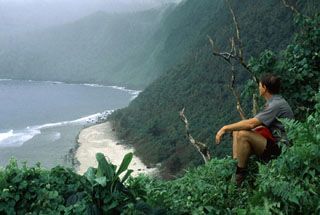Report on Ta'u (United States) — 17 August-23 August 2022
Smithsonian Institution / US Geological Survey
Weekly Volcanic Activity Report, 17 August-23 August 2022
Managing Editor: Sally Sennert.
Please cite this report as:
Global Volcanism Program, 2022. Report on Ta'u (United States) (Sennert, S, ed.). Weekly Volcanic Activity Report, 17 August-23 August 2022. Smithsonian Institution and US Geological Survey.
Ta'u
United States
14.23°S, 169.454°W; summit elev. 931 m
All times are local (unless otherwise noted)
HVO reported that an earthquake swarm in the Manu’a Islands of American Samoa continued to be recorded and felt by residents of Ta’u Island and Ofu-Olosega. About 20 earthquakes per hour were recorded by four microseismometers distributed on Tutuila, Ta’u, and Ofu-Olosega Islands. The largest events were estimated to be between magnitudes 2 and 3; most events are too small to be felt. Analysis of the seismic data indicated that the earthquakes were occurring beneath or around the Manu’a Islands, likely closer to Ta’u rather than Ofu-Olosega, though the exact locations, depths, and magnitudes were unknown. The number, size, and frequency of earthquakes recorded by instruments and being felt by people and on both islands indicated that seismicity was above background levels; HVO changed the Volcano Alert Level to Advisory and the Aviation Color Code to Yellow for both volcanoes. Earthquakes continued to be recorded at around the same rate during 20-22 August. Two additional seismometers were installed on Ta’u during 22-23 August.
Geological Summary. The 10-km-wide Ta'u Island, located at the E end of the Samoan islands, is ringed by sea cliffs. It is the emergent portion of the large Lata shield volcano. A major flank collapse event around 22 ka resulted in the steep scarps on the southern side of the island. Two smaller shields were constructed along rift zones at the NW and NE tips of the island. The NW corner of the island has a tuff-cone complex that ejected large dunite xenoliths and coral blocks. Numerous Holocene post-caldera cones occur at the summit and on the flanks.
Source: US Geological Survey Hawaiian Volcano Observatory (HVO)

